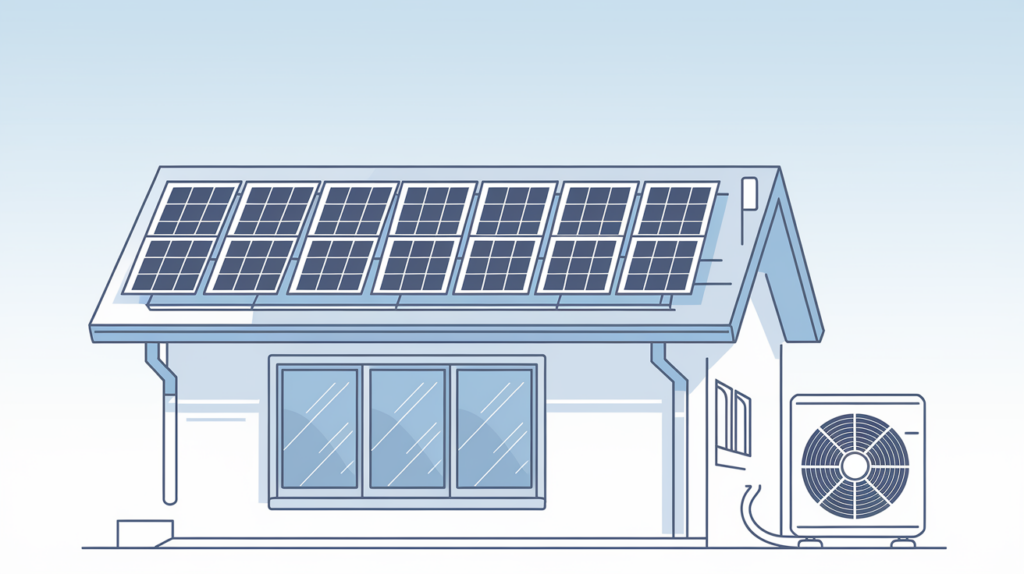Updated on October 7, 2024
Dealing with taxes as a homeowner can be a bit daunting, but it also opens the door to potential savings. It’s important to be aware of tax credits and deductions that can benefit you financially. This guide will walk you through 13 crucial homeowner tax credits and deductions that every homeowner should leverage. From mortgage interest deductions to savings for home office setups, understanding these can have a positive impact on your finances.
Homeowner Tax Credits
1. Mortgage Interest Credit
To apply for this credit, you need to fill out Form 8396 and attach it to your 1040 tax form. Remember to report the credit amount on Schedule 3 of the 1040 form.
There are several rules and limits for this credit. For example, you can’t use the same expenses for both credit and deduction. If you claim the mortgage interest credit, you must reduce your mortgage interest deduction on Schedule A by the same amount. If you refinance your mortgage, you’ll need a new Mortgage Credit Certificate (MCC) for the new loan, and the credit amount might change. Also, if you sell your house within nine years, you might have to pay back some or all of the credit you received from the MCC program.
2. Energy Efficient Home Improvement Credit
In a significant move to promote sustainable living, the IRS offers a tax credit for energy-efficient home improvements. From 2023 through 2032, homeowners can claim up to $3,200 annually for making their homes more energy-efficient. This includes a 30% credit on any qualified energy efficiency improvements installed during the year, residential energy property expenses, or home energy audits.

However, the maximum annual credit you can get is $1,200 for energy property costs and certain home improvements. This includes:
- $250 for each door (capped at $500 for all doors)
- $600 for windows
- $150 for home energy audits
Additionally, there’s a separate credit of up to $2,000 available each year for installing qualified heat pumps, biomass stoves, or biomass boilers.
To learn more about the eligibility and how to claim this credit, check out this IRS article.
>> You may also like: Energy Tax Credits: How Going Green Could Help You
3. Credit for Electric Vehicle Charging Equipment
Many are aware of tax credits for buying electric cars, but did you know you can also get credit for setting up electric vehicle charging stations at home? You can get a federal tax credit covering 30% of the cost for qualifying EV chargers, with a maximum of $1,000 for non-depreciable property.
For property that depreciates in value, like commercial EV chargers, the credit is 6% of the installation cost, up to a maximum of $100,000 for each charger. However, businesses that meet prevailing wage and apprenticeship requirements can get a bigger credit of 30%, with the same $100,000 limit per charger.
For additional information on other requirements and how to claim this credit, please read this IRS article.
Homeowner Tax Deductions
4. Mortgage Points Deduction
When you take out a mortgage, you usually pay “points” to your lender. For your main home, you can often deduct these points in the year you pay them, as long as your loan is secured by that home. But if it’s for a second home, you need to spread the deduction over the loan’s life, like taking off a bit each year for a 30-year mortgage.
If you refinance, you typically deduct the points over the life of the new loan. But, if you use the refinanced loan to significantly improve your main home, you might be able to deduct those points right away, if you meet certain criteria. Also, when you pay off a refinanced loan, you can deduct any points you haven’t yet deducted. Just a heads up, if you refinance again with the same lender, you’ll need to add the new points to any remaining ones and deduct them over the life of the new loan.
One important thing to remember is that to claim this deduction, you need to itemize on your tax return, which a lot of people don’t do because they choose the standard deduction instead.
Read more: The IRS offers a solar tax credit for homeowners who install solar panels, but how does IRS verify solar credit?
5. Mortgage Interest Deduction
For most homeowners, the biggest tax advantage comes from deducting mortgage interest. If you’re itemizing your deductions, you can deduct interest on a debt of up to $750,000 ($375,000 if you’re married and filing separately). This is for debts related to buying, building, or making major improvements to your main or second home. (For mortgages taken out before 2018, the limit is up to $1 million). Big improvements count here, like adding to your home or major renovations, but small repairs don’t.

Your lender will send you a Form 1098 in January. It shows the mortgage interest you paid last year, and that’s the amount you deduct on Schedule A of your Form 1040. If you’ve just bought a home, make sure this form includes the interest you paid from the date you closed the deal to the end of that month. This detail should be on your settlement sheet for the home purchase. You can still deduct this interest even if the lender doesn’t include it on Form 1098. Remember, any mortgage interest not listed on Form 1098 goes on Schedule A too.
6. Home-Office Expense Deduction
If you work from home and are self-employed, you might be able to deduct some of your home office expenses. This is true whether you own or rent your home, and it doesn’t matter if it’s a house, apartment, or even a separate building like a garage or studio.
To get this deduction, you need to use a part of your home just for your business on a regular basis. If you do, you can deduct things like a part of your utility bills, insurance, and repairs. Homeowners can also deduct depreciation, while renters can deduct a portion of their rent.
There are two ways to figure out this deduction:
- Actual Expense Method: Calculate the business portion of your home expenses.
- Simplified Method: Deduct $5 for every square foot of your office space, up to 300 square feet, which can add up to a $1,500 deduction.
7. Deduction of Medically Necessary Home Improvements
You might be able to get a medical expense deduction for installing special equipment or making home modifications for medical reasons. This includes things like ramps, widened doorways, handrails, adjusted cabinets, lifts, and ground grading. Maintenance costs for these necessary upgrades are also deductible.
However, there are some limitations. You must itemize on Schedule A of Form 1040, and only expenses over 7.5% of your adjusted gross income can be deducted. Also, the deduction is reduced by any increase in your home’s value due to the upgrades. For instance, if you spend $50,000 on an elevator and it raises your home’s value by $40,000, your deduction would be $10,000 ($50,000 – $40,000). Remember, these upgrades must be medically necessary, not just for general aging-in-place improvements.
8. Deduction of Rental Expenses
If you rent out part of your home, like a room or basement, you’ll have to pay taxes on what you earn from it. But the good news is, you can deduct costs related to this rental space. This includes things like insurance, repair work, property taxes, utilities, and even depreciation on the part of your house that’s being rented. You’ll report these deductions on Schedule E of your Form 1040, not on Schedule A.

The tricky bit is when you have expenses for your whole house, like your electricity bill or overall property taxes. Here, you need to figure out what portion of these costs goes towards the rented space. For instance, if you rent out 10% of your home, you can deduct 10% of these overall expenses. But if you have costs that are just for the rental area, like if you repaint just the rented room, then you can deduct the whole expense.
Just a heads up, if you’re renting out a vacation home or an investment property, the way you calculate your rental income and deductions is a bit different.
9. Property Tax Deduction
As a homeowner, you’ll face various taxes, including local real property tax. The good news is that you might be able to deduct these state and local property taxes on your federal income tax return.
However, there are some limitations to this deduction. First, you need to itemize deductions to claim it. If you do, you can list these taxes on Schedule A of your Form 1040.
Keep in mind there’s a cap on deductions for state and local taxes, including property taxes. The limit is $10,000, or $5,000 if you’re married and filing separately. Any amount over this isn’t deductible. Therefore, this cap can significantly affect homeowners in states with high income, sales, or property taxes.
Learn more about the difference between tax credit and tax deduction.
Other Tax Breaks Available for Homeowners
10. Forgiveness of Debt on a Foreclosure or Short Sale
During economic downturns, more homeowners might not be able to keep up with mortgage payments, leading to lenders possibly reducing or canceling the debt through a short sale or foreclosure. Normally, forgiven debt is considered taxable income, but for principal residence mortgage debt forgiven in these situations, up to $750,000 is tax-free ($375,000 for married filing separately).
This tax exemption applies to mortgages used to buy, build, or significantly improve your main property, and the mortgage must be secured by that home. It also covers refinanced mortgages up to the amount of the original mortgage before refinancing.
However, this tax break doesn’t apply if the debt is forgiven for services to the lender or for reasons unrelated to a decrease in your home’s value or your financial situation. Also, the excluded debt amount that reduces your home’s cost basis can affect potential future taxes if you sell the home.
11. Capital Gain Exclusion When Selling Your Home
The IRS offers a tax break when you sell your home: you may not owe taxes on the profit. For married couples filing jointly, up to $500,000 of gain is tax-free ($250,000 for single filers), provided you’ve owned and lived in the home for two of the last five years and haven’t used this exclusion in the past two years. For instance, if you sell your home for a $100,000 profit, you won’t owe tax on this gain if you meet these criteria. However, losses from home sales aren’t tax-deductible.
If you don’t meet all the criteria, you might still qualify for a partial exclusion in certain situations like job relocation or health issues. The amount you can exclude depends on how closely you meet the ownership and residency requirements.
Be aware that selling your home might require repaying any depreciation claimed for business use, including first-time homebuyer credits from 2008, or federal mortgage subsidies.
12. Increased Basis When Selling Your Home
If you still owe taxes after using the capital gain exclusion from selling your home, you can lower your tax bill by increasing your home’s basis. Your taxable gain is the sales price minus the home’s basis, so a higher basis means less tax.

The basis starts with what you paid for the home, which is great. But you can also add various purchase and improvement costs. This includes certain fees and closing costs from when you bought the home. If you built the house on your own land, the basis also covers the land cost, architect and contractor fees, permit costs, utility connections, and legal fees. Plus, you can add the cost of major additions and improvements (but not routine repairs and maintenance).
Final Thoughts
Figuring out taxes as a homeowner can be tough, but learning about different tax breaks and deductions can save you a lot of money. Also, it’s really important to keep good records and know what tax breaks you can use. This can help a lot with your financial plan as a homeowner. If you’re ever unsure, don’t hesitate to talk to a tax professional to make sure you’re getting all the benefits you can and following the tax rules correctly.
>> Other tax benefits you may also like:




 anywhere
anywhere  anytime
anytime